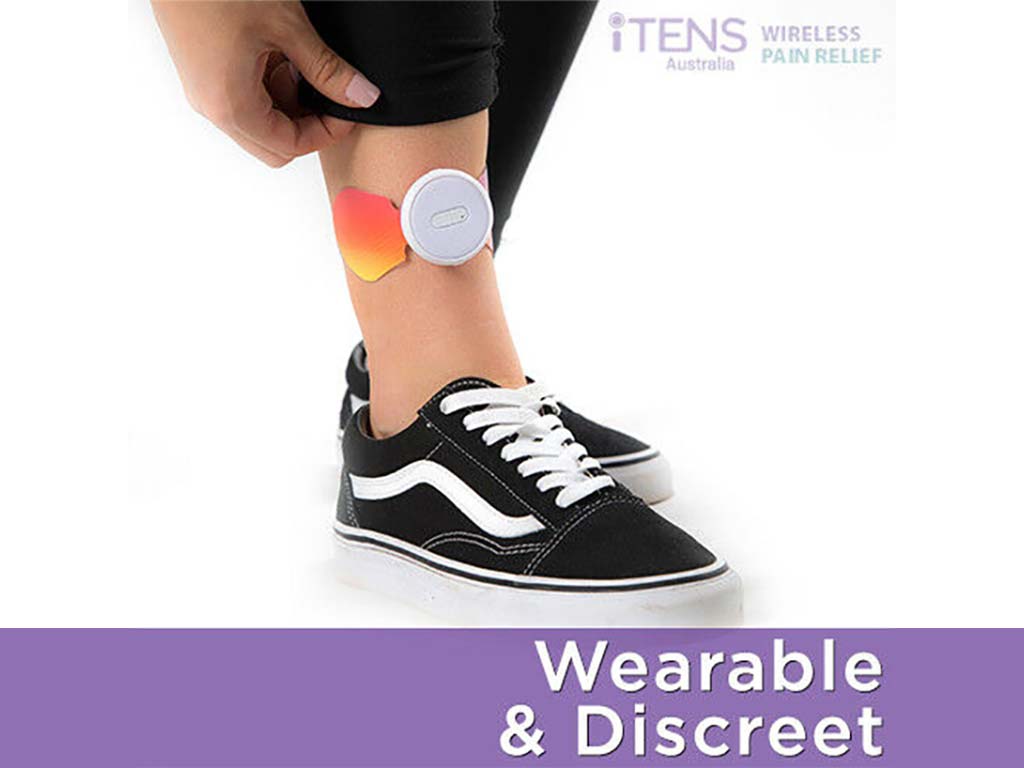
Transcutaneous Electrical Nerve Stimulation (TENS) is a method of pain relief. It utilises an electronic device that dispatches electrical currents to the body. This electrical stimulation works in various ways. It blocks the transmission of pain signals and triggers the release of endorphins. Furthermore, TENS for pain relief presents benefits. It is natural, adjustable, and cost-effective. Additionally, TENS can treat various types of pain. It can manage acute pain and chronic pain conditions.
Living with pain can be a daily struggle, affecting every aspect of life. Thus, it is essential to find pain management techniques. Traditional forms of pain relief may include medications and surgeries. However, they may come with adverse effects. Conversely, TENS therapy offers a safe and effective treatment. Medical professionals and physical therapists often recommend it. This article will present how TENS therapy for pain relief works, its benefits, and the treatable pain types.
How TENS for Pain Relief Works
Generally, TENS for pain relief works by delivering electric currents to the body. It sends the electrical pulses through electrode pads placed on the skin. Consequently, this electrical stimulation functions in many ways to provide effective analgesia. Firstly, TENS stimulate the production of endorphins. These are the natural pain-relieving chemicals of the body. It also improves well-being.
Secondly, the Pain Gate Theory. It plays a central role in the effectiveness of TENS therapy. According to this theory, the electrical signals from the TENS unit can effectively “close” the neural gates to painful inputs. Thus, it prevents pain messages from reaching the brain. TENS makes it harder for pain signals to pass through, reducing the sensation or perception of pain in people.
TENS treatment also contributes to providing relief by improving blood circulation. The electrical currents encourage dilation of the blood vessels, increasing blood flow. Enhanced circulation brings more oxygen and nutrients to the affected body tissues. It facilitates healing and reduces discomfort by flushing out pain-inducing chemicals from the area.
Frequencies and Intensities
The effectiveness of TENS hinges on the proper adjustments of its two main settings:
- Frequencies: Refers to the rate at which electrical pulses are delivered, measured in Hertz (Hz). TENS devices typically offer low and high frequencies. Low-frequency settings (1-10 Hz) stimulate the body to produce endorphins. Meanwhile, high-frequency settings (50-120 Hz) activate the pain gate mechanism.
- Intensities: Determines the strength of the electrical pulses. It is adjustable and is measured in milliamperes (mA). The key to effective TENS therapy lies in finding a balance in intensity that is strong enough without causing discomfort.

Benefits of TENS for Pain Relief
Foremost, TENS for pain relief proves effective across various types of pain. Its adaptability makes it a preferred choice for individuals suffering from different conditions. Secondly, the TENS machine allows for direct application to painful areas. TENS delivers targeted stimulation for pain relief by placing the electrode pads precisely where the discomfort is felt.
Thirdly, TENS therapy harnesses the natural body processes to provide relief. It does not require incisions, injections, invasive procedures, or medications. Hence, it eliminates lengthy recovery periods or dependency issues of medications. Fourthly, TENS devices come with variable settings. It enables users to adjust the pulse rate, pulse amplitudes, and pulse durations, allowing for personalised treatment.
Furthermore, compared to other pain management techniques, TENS units are relatively inexpensive. It does not require continuous spending on consumables, except for occasionally replacing electrode pads. Also, it is a complementary therapy. It can be used alongside other techniques. Additionally, TENS therapy is only associated with minimal manageable adverse effects.
Potential Side Effects
In some cases, skin irritation may occur at the electrode placement site. Keeping the skin clean and dry before applying the pads and ensuring the electrodes are not overly worn or dirty can minimise this risk. Additionally, an allergic reaction can occur due to the materials used in the electrode pads or the adhesives. Choosing hypoallergenic pads and conducting a patch test can help mitigate allergic reactions.
During a TENS therapy session, the electrical pulses can sometimes cause involuntary muscle twitching. It usually occurs at higher intensity levels and can be adjusted by lowering the intensity of the device.

Types of Pain Treated with TENS for Pain Relief
TENS for pain relief offers a versatile approach to managing various types of pain. Firstly, TENS therapy can treat acute pain conditions. It is often sudden and sharp and can arise from postoperative pain, labour pain, and period cramps. Secondly, TENS can address long-lasting or persisting chronic pain. Conditions like arthritis pain, fibromyalgia, and backaches fall into this category.
Moreover, TENS treatment is beneficial in aiding musculoskeletal pain. It affects the bones, muscles, ligaments, tendons, and nerves. Common examples include knee osteoarthritis pain, joint pain, and rheumatoid arthritis. Furthermore, TENS can provide relief to neuropathic pain. It is caused by nerve damage and often feels like burning sensations. It may include phantom pain, sciatica, and diabetic neuropathy.
In addition, TENS can manage muscular discomfort. It arises from overuse, tension, or injury. TENS helps by inducing muscle relaxation and increasing blood circulation in the treatment area. Nevertheless, it is valuable for athletes and active individuals. TENS therapy provides safe and effective relief across a broad spectrum of conditions. It makes it a preferred choice for many people.
When to See a Doctor?
If pain is severe, worsens, or persists without improvement, it is essential to see a health professional. It could indicate an underlying medical condition that requires medical treatment beyond TENS. Likewise, if the pain characteristics change (spreads, becomes sharper, or numbs), seeing a healthcare provider is necessary. They can reassess the condition to find the exact source.
Additionally, if the TENS device causes skin irritation, burns, or discomfort despite adjustment, stop using it and consult a doctor. They can provide alternative methods or a different TENS device setting. Moreover, individuals with underlying health conditions should consult a professional before using TENS.
Conclusion
Overall, TENS for pain relief is a valuable tool for many individuals. It utilises a battery-operated device to send electrical currents to the body. It delivers the pulses via electrodes attached to the skin. This electrical stimulation interrupts the pain signals travelling to the brain. Also, TENS can stimulate the release of endorphins and boost blood circulation in the treatment region. Additionally, the effectiveness of TENS lies in the adjustment of frequencies (low or high) and intensities (comfortable intensity).
Furthermore, TENS presents numerous benefits. It is adaptable, natural, adjustable, and cost-effective. Also, it provides targeted relief and can complement other management techniques. With such mechanisms and benefits, TENS can treat various types of pain. It may include period cramps, backaches, joint pain, sciatica, and muscle tension. Nevertheless, while TENS is safe, knowing the potential side effects and when to see a doctor is crucial. It ensures the optimal use of TENS.




















